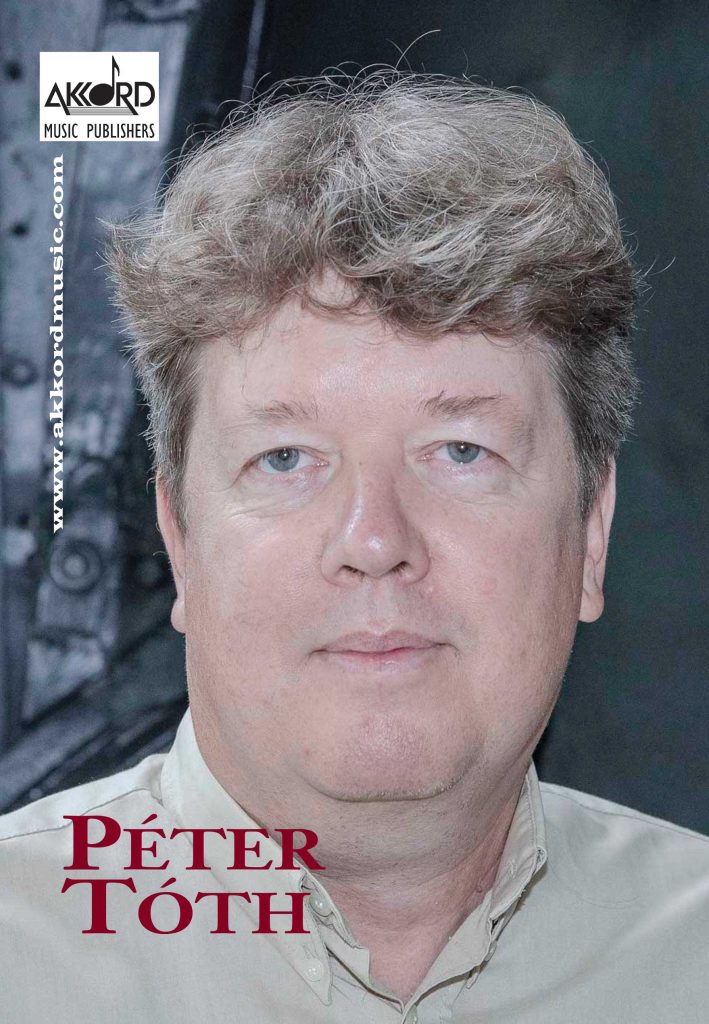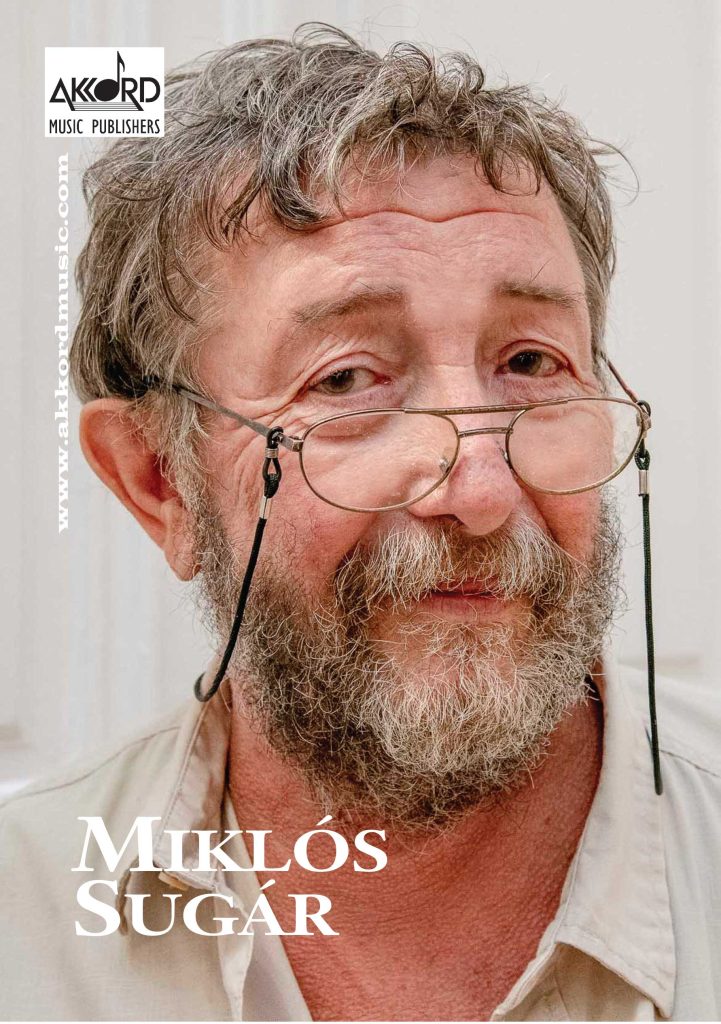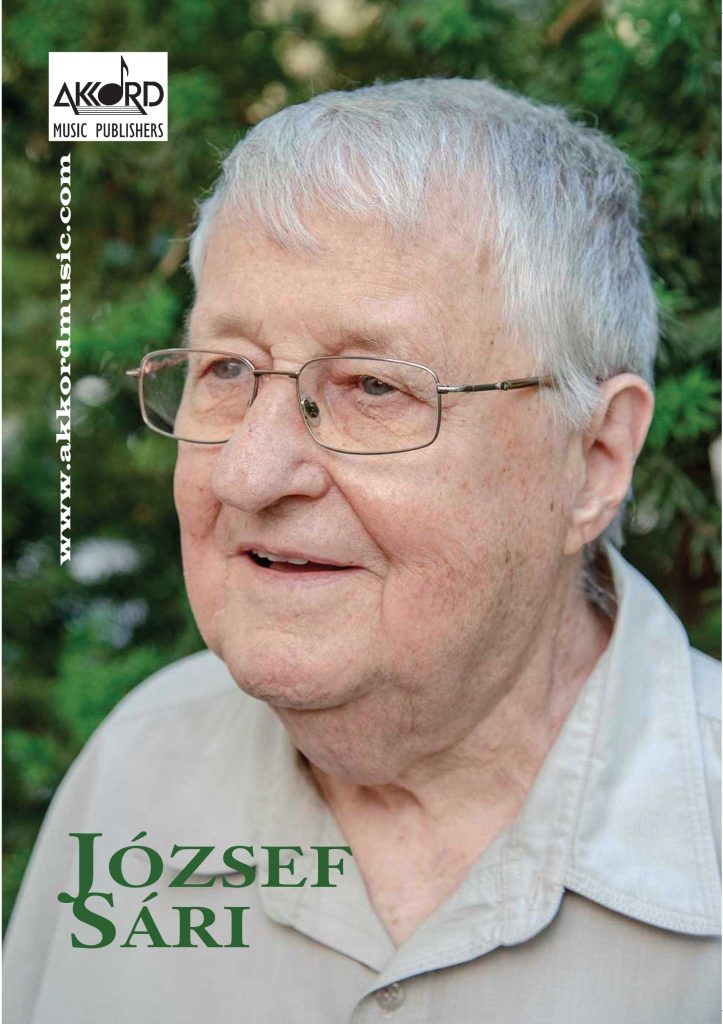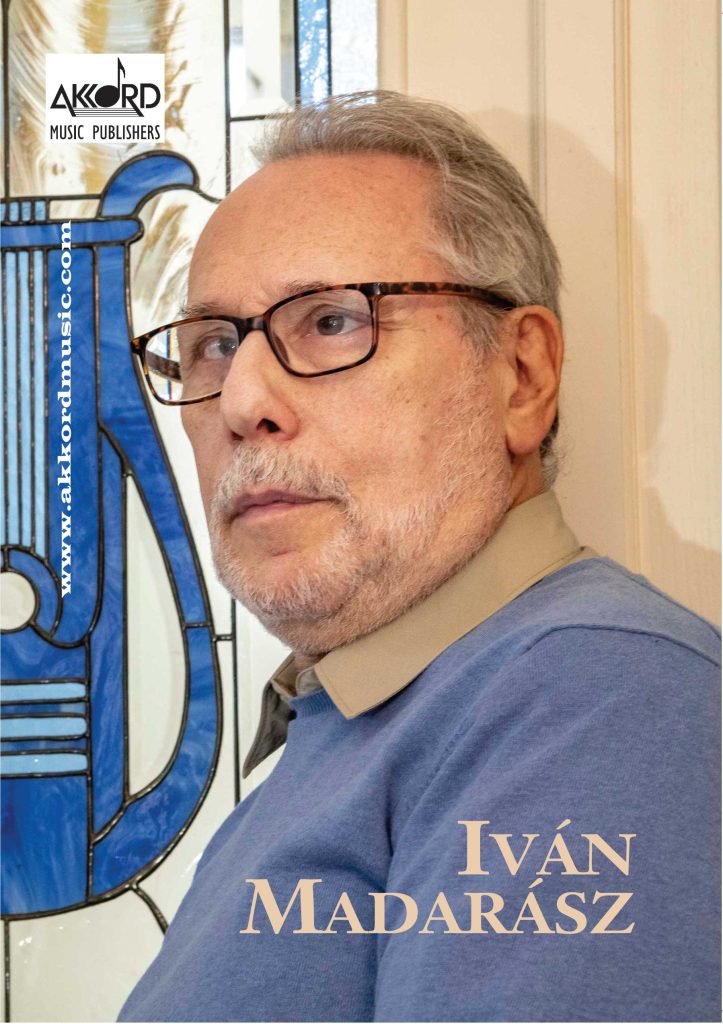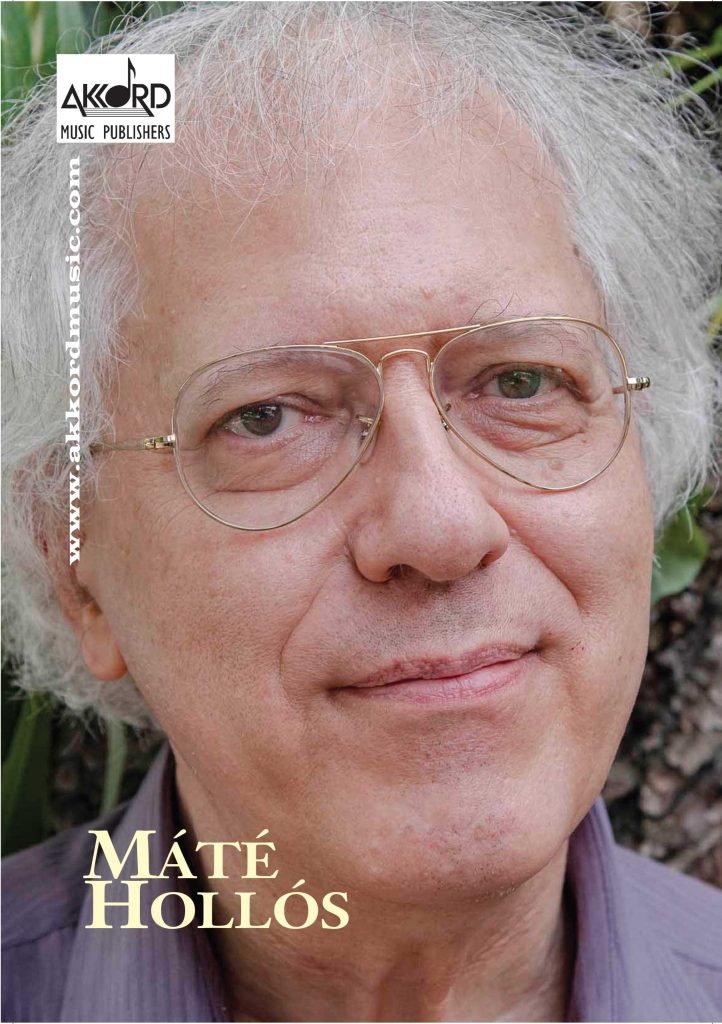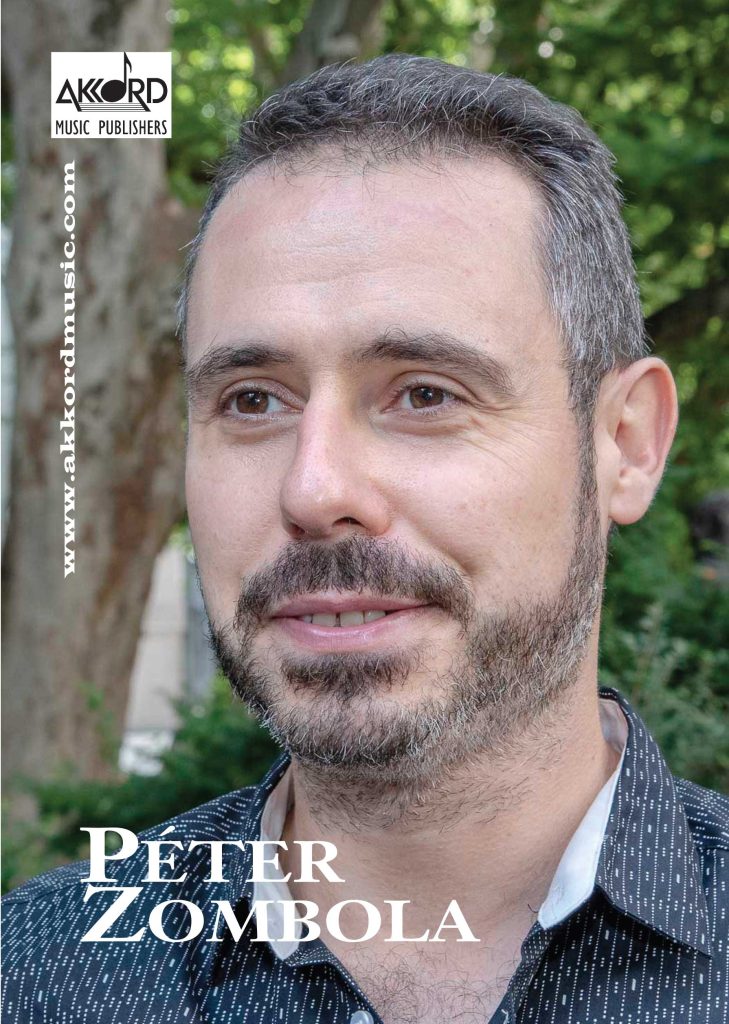 View Large
View Large
István Láng (b. 1933) studied composition at the Budapest Liszt Acad[1]emy with János Viski and Ferenc Szabó between 1950 and 1958. From 1973 he was senior lecturer, later associate professor, then full professor in the chamber music department. Between 1957 and 1960 he taught music at the Academy of Dramatic and Cinematic Art. From 1966 to 1984 he was music advisor of the National Puppet Theatre. In 1961 he won a prize at the Ludwigshafen competition with his Concerto per archi. Between 1970 and 1990 he was president or member of the juries of various international music competitions. As a visiting lecturer he presented papers at the University of Colorado (1973), Central New Mexico Community College (1985, 1987), and at New Mexico State University (1988). From 1978 to 1990 he was secretary general of the Association of Hungarian Musicians. He was a member of the executive committees of ISCM (International Society for Contemporary Music) between 1984 and 1988 and of IMC – UNESCO (International Music Council) from 1990 to 1994. In 1958 he was the first in Hungary to write about the importance of establishing a music studio for electronic music. He took part in the work of the EAR Ensemble (Electroacoustic Research) from 1994 with recorded and live electronic compositions. His compositional work was recognized with the Erkel Prize (1968 and 1975), with the Bartók–Pásztory Award (1994), and the Artisjus Award (2005).
Láng’s oeuvre so far has been versatile, extending from opera, symphonic and chamber music through instrumental solo pieces to electro-acoustic music. He has a strong affinity with the stage and his dramaturgical talent can often be traced both in the structure of his instrumental works and his phrasing. Canto (1994) for flute solo, which spectacularly employs the modern technique of the instrument, was dedicated to the legendary flautist Zoltán Gyöngyössy. It uses multiphonics (chords of two or more tones realized by special fingerings), key-clicks and quarter-tones. The composition, lasting almost a quarter of an hour, unfolds from a five-note motive, divided by three rests. This motive is presented at the beginning of the piece. The five notes (B-E-A-E-Eb) refer to Hetaera Esmeralda, a name familiar from the Thomas Mann novel, Doctor Faustus.
Sempre in tensione (2002) for flute, violin and viola, was also born from the inspiration of Gyöngyössy’s playing and with his encouragement. The tensione of the title refers to a kind of positive tension, originating from the continuous attention the musicians pay to one another and their ability to constantly react to the other parts. In the course of the through-composed nine movements, cadenza-like phrases on the flute emerge from the three instruments of equal rank. Shortly before the closing of the composition, there is a definitive moment of joy and tranquillity, when, in unisono, the three instruments find the common note (Ancora meno mosso, calmo).
Knots on the Line (1993) was composed for the flautist couple, Ákos Dratsay and Bea Berényi, for flute, alto flute and violoncello. The ‘knots’ in the slightly puzzling title refer to the various short, very rhythmic impulses which unexpectedly interrupt the phrases. The considerable independence of the three parts and the plentiful use of modern effects bring about the dialogue between the instruments with Láng’s characteristic sense of the dramatic.
Silence (2016) was composed to celebrate the 70-year-old István Matuz. Written for flute and a few percussion instruments, the composition, not surprisingly, gives priority to the flute. The percussionist partner adds a sonorous, gentle background to the unfolding events. The title refers to the respectful silence of the festive audience and fellow musicians.

Solo pieces for wind instruments form a special group. The piccolo piece, Preludio, was composed in 1997 for Gergely Ittzés. It poses serious difficulties in sound production for the performer: besides the latent polyphony achieved through big register changes, multiphonics, realized by fingering combinations and by altering the way of blowing, also play an important part. The six short movements of Variazioni senza tema (2014–2015) for English horn feature the possibilities inherent in the instrument. The first variation (Risoluto ben ritmato) is the repetition of a single note with various rhythmic patterns. The second (Giocoso), the third (Un poco più vivo, appassionato), and the fourth (Poco moderato, burletta) variations also evolve from repetition, turning over the idea of repeating a single note more and more freely. The fifth movement (Inquieto) starts with a chromatic progression, while the closing variation (Semplice) arrives at a wide-ranging melody. Interpolations (1988), dedicated to Gábor Janota, offers bassoon players a colourful, modern solo piece, theatrical in an appropriate sense of the word, in which the most cohesive element is the apposing of extremely different emotions and forms of behaviour. The publication also includes a fingering chart. Sassonanti (2000) enriches the contemporary Hungarian literature for the saxophone. It features similar effects and ideas to those in the other works for woodwind.
There are three works composed for strings in the repertory. Resemblances (2015) for violin and ad libitum CD was dedicated to Eszter Perényi and the EAR Ensemble. The title refers to musical elements recurring in different parts of the piece. The CD material can be acquired from the publisher but the violin part also stands alone. Glances back (2000) is a viola piece with an irregular structure. The opening Mesto section is followed by a dramatic Energico and a playful Giocoso, then these two latter sections are varied. After new material (Con fuoco) which emerges with a surprising gesture, the thematic material of the opening section (Mesto) returns in varied form, reconsidered in the light of the previous sections. Pezzo strepitoso (2013) is the composer’s contribution to the solo double bass literature with his signature style and methods. Concitato (2010) for guitar was issued by Akkord with fingering suggestions by András Csáki.

István Láng’s piano piece, Days of a Leap-Month (2007), is made up of 28 short movements and a postlude. Piano Pieces for Four Hands from 7 to 77 Years (2018) contains four series: Three Microludiums, a four-movement Little Suite, Five Bagatelles and the six-movement Sketches. The pieces are genuine miniatures: most of them take up no more than one page. Láng formulates these short movements with a claim for the most profound expression as if he was trying to fit his sense for drama within the framework of Webern’s concise forms.

The fantasia for harpsichord, Ist es möglich ohne B-A-C-H? (2000) expresses a rhetorical question. At first glance the title might suggest that the composer experiments with shaping his ideas only with eight tones, without B-A-C-H [Bb-A-C-B]. The situation, however, is much more complex. At the end of the piece, the motive, which conveys many overtones from music history, and which already appeared in the musical texture earlier, can be heard in an easily recognized form. There is an indication in the publication to draw the performer’s attention to the motive.
Written by Viktória Ozsvárt
translated by Kata Ittzés



